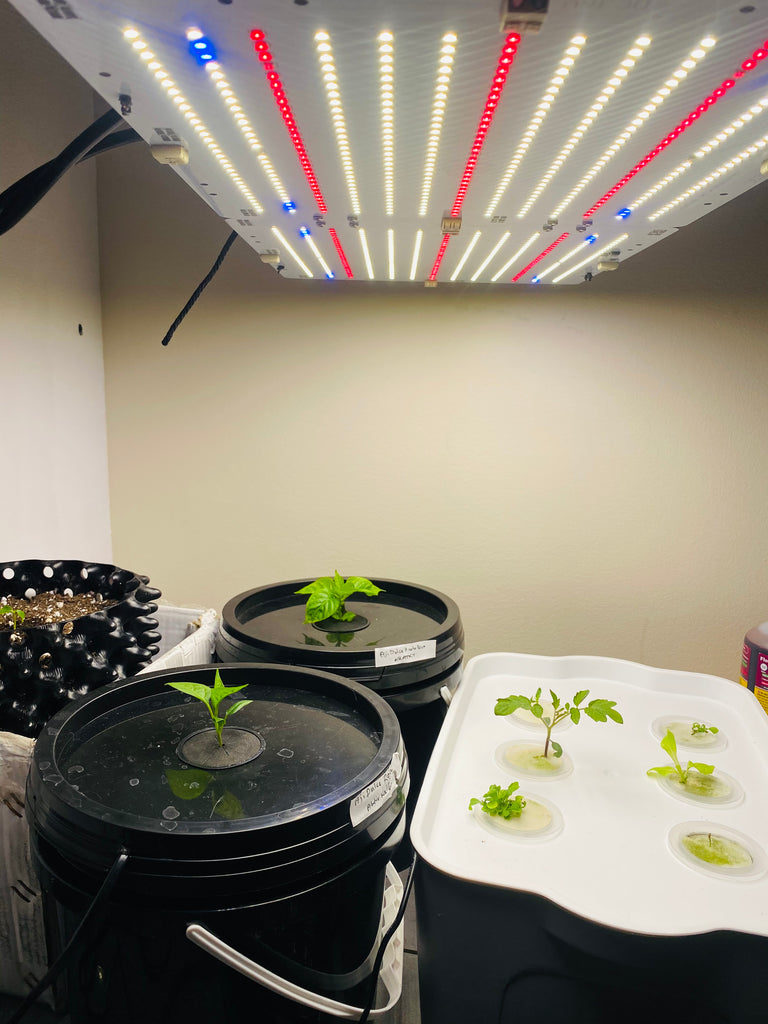KRATKY
Posted by REMY EKORNSETER

«
The Kratky method is a passive hydroponic technique for growing plants suspended above a reservoir of nutrient-rich water. Because it is a non-circulating technique, no additional inputs of water or nutrients are needed after the original application, and no electricity, pumps, or water and oxygen circulation systems are required. The Kratky method has applications both for commercial food production and as a small-scale and low-maintenance technique for home growers."
Now that is the definition of Kratky and it quickly became popular among herb and salad growers. The trick was this: You found a container, mixed nutrient liquid in it and put, for example, salad in a netpot. Here it will sprout and grow. When the time has come to harvest the salad or the herbs, the plant has drunk up most of the nutrients and you start all over again. This is the idea behind it, here we are not going to do anything after the seed has been planted. However, if you want to grow tomatoes, cucumbers, chillies, aubergines etc., a little more is required. When these plants get big, you have to fill the container, and quite often when they are big. But in return you have a growth of 1.5-3x the rate of good soil!

Ok, so how do you go about it. You need a container, for example an industrial bucket of 5l or more, but 5l is fine to start with. Then you can choose, run classic kratky with stagnant water or active kratky with a water pump that circulates the water in the container. The latter gives better growth, it breaks the surface and brings more oxygen into the water, it keeps the water moving and algae and other impurities will not form as quickly. It is important that you open up the pump now and then and clean it. Well, it is your choice so you choose which method. Both are silent.
When you first start, it is easiest to germinate what you are going to grow in rockwool , rootriot cubes or vermucelite . When they appear they can be moved. In the bucket/pail, cut out holes that fit the netpot you have. Here you can either stabilize the plant with washed play stones or use a foam insert that provides 100% blocking of the light. Mix the food according to the manufacturer's instructions. It's pretty easy, especially with a pull-up syringe . Start low. Check the pH with a pH meter and adjust accordingly. If you have municipal water, the pH is either within or higher, so it is most often adjusted down. When you fill up your container, fill up so that the bottom part of the roots goes into the liquid. The rest should be air. This is to avoid drowning the plant. After that, it's plank riding and enjoying watching the growth. When the plants start to get a certain size, the root ball will become very large. You can either trim it a bit, or put it in an even bigger container. Check the level of the industry from time to time. Adult plants drink a lot! Also check the pH at least every 14 days and top up with nutrient liquid as needed. This way you can keep going for ages. Tomatoes, cucumbers, chillies, whatever you want all year round, bloody efficient without the use of a noisy air pump.
we have some nice kits that can also be used for cloning. These are great for learning and making mistakes before moving on to larger projects, and will always be a good salad/herb station with good growth.


